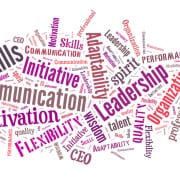How flexible is your leadership style?
A review of Leadership That Gets Results by Daniel Goleman (Harvard Business Review, 2000)
Daniel Goleman gained notoriety in the mid-1990s for identifying competencies related to “emotional intelligence,” or the ability to perceive, regulate, understand, and work with emotions to enhance leadership. Those competencies are self-awareness, self-regulation, motivation, empathy, and social skill. Based on research by the consulting firm Hay/McBer, Goleman identifies six distinct leadership styles, each of which uses a unique combination of the emotional intelligence competencies.
The selection of a leadership style influences not only the outcome of a particular situation, but the overall organizational climate as well. “Climate” is defined to reflect the organization’s flexibility, workers’ sense of responsibility to the organization, the level of standards set, the degree to which performance feedback and rewards offered are considered accurate, the clarity those in the organization feel about its mission and values, and the level of commitment they hold toward a common purpose. Each style affects each component of the organizational climate as well as the organization’s financial results, and each may be used effectively in certain situations. Highly effective leaders draw on multiple styles:
The styles, taken individually, appear to have a direct and unique impact on the working atmosphere of a company, division, or team, and in turn, on its financial performance. And perhaps most important, the research indicates that leaders with the best results do not rely on only one leadership style; they use most of them in a given week-seamlessly and in different measure-depending on the business situation. Imagine the styles, then, as the array of clubs in a golf pro’s bag. Over the course of a game, the pro picks and chooses clubs based on the demands of the shot. Sometimes he has to ponder his selection, but usually it is automatic. The pro senses the challenge ahead, swiftly pulls out the right tool, and elegantly puts it to work. That’s how high-impact leaders operate, too.
Goleman describes the six styles as follows:
- The coercive style, in which the leader unilaterally directs action and requires compliance, summarized as “Do what I tell you.”
- The authoritative style, in which the leader identifies a vision and motivates those responsible for achieving the resulting goal to choose their approach to it, summarized as “Come with me.”
- The affiliative style, in which the leader focuses on building harmony and strong working relationships, summarized as “People come first.”
- The democratic style, in which the leader seeks to build consensus among team members by giving each a voice, summarized as “What do you think?”
- The pacesetting style, in which the leader sets and adheres to high standards for performance for him- or herself and the team, summarized as “Do as I do, now!”
- The coaching style, in which the leader focuses on developing team members’ performance, summarized as “Try this.”
Although each style can be used well in a particular situation, the authoritative, affiliative, democratic, and coaching styles have a consistently positive effect on organizational climate and results. (The article includes a fascinating table that shows quantitatively the effect that each style has on each component of the organizational climate as well as the overall positive or negative effect.)
An effective leader selects the appropriate style based on the situation he or she faces. For example, immediately following a natural disaster, the coercive style would likely yield a positive effect (the leader would identify and provide direction as to what actions must be taken for the organization to weather the crisis), whereas a democratic style would be ineffective in such an emergency, as team members would waste valuable time reaching consensus.
Becoming aware of the six leadership styles may permit leaders to develop those styles that come less naturally and to choose consciously when to employ each style. Leaders may develop styles that don’t come naturally by studying the emotional intelligence competencies that underlie the style, as set forth in Goleman’s article. Although emotional intelligence may seem like a flighty buzzword, each competency contributes meaningfully toward an individual’s ability to motivate, encourage, and lead team members to high performance.
What’s in it for lawyers?
Unlike many corporate leaders, lawyer-leaders frequently lack training in or vocabulary to describe what creates effective leadership. Studying Goleman’s article is a good first step in understanding the empirical study of leadership styles and the circumstances in which each is effective. For example, though the pacesetting style is not a consistently effective model, it may be quite effective for teams composed of high-achieving, highly motivated lawyers.
Most lawyers have had the experience of working for a talented, demanding (perhaps even “obsessive”) senior lawyer who sets high standards and expects everyone to meet them as well as he or she does – someone who exhibits the pacesetting style, in other words. A pacesetting leader might learn about the drawbacks and dangers of using only the pacesetting style, including low morale that results from overwhelm in the face of unreachably high standards and fear that results from the need to second-guess what the leader wants rather than what might be most effective.
By learning to use other leadership styles masterfully, the pacesetting lawyer may round out his or her leadership repertoire and find more effective ways to evoke high performance from every member of the team. While such development requires consistent effort over time – simply reading the article will not, without more, produce meaningful change – learning the vocabulary and seeing that leadership is a science as well as an art will enhance every lawyer’s leadership abilities.




Leave a Reply
Want to join the discussion?Feel free to contribute!